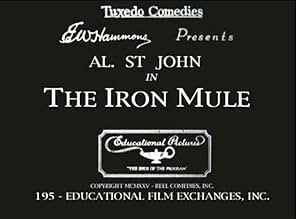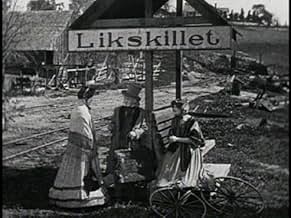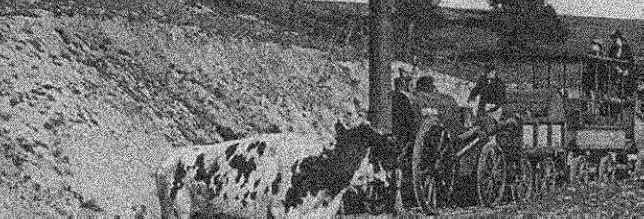Buster Keaton did everything he could to help his cinematic mentor and best friend Roscoe Arbuckle after he was banned from the screen in 1922 due to the scandal surrounding his trial (at which he was ultimately exonerated) on false charges of rape and manslaughter. In this case, Buster's generosity extended to letting Arbuckle, then directing under the name William Goodrich, use the train Keaton's team had built for his 1923 feature Our Hospitality: a working model of Stephenson's "Rocket," the first locomotive. The Iron Mule, built around the train, also features appearances by the Gentleman's Hobbyhorse, a model of the first (pedal-less) bicycle, which Buster had built based on an old print, the costumes (or at least replicas of them) from Our Hospitalityand Buster himself as an Indian chief! The version of The Iron Mule that is usually seen is only one reel and does not include Buster's cameo, but I was lucky enough to see the complete two-reel version at the Museum of Modern Art's Roscoe Arbuckle retrospective. I have to admit I would never have recognized Buster, who is heavily war-painted and never appears in close-up, if his role hadn't been pointed out by the program's introducer. He does do one or two distinctive falls, but obviously he was just joining in for a lark and with no intention of being recognized.
The Iron Mule stars Arbuckle's nephew Al St. John as the train's engineer. Usually the embodiment of low comedy with his frantic mugging, splashy falls and vulgar antics, St. John was aiming at class here. In fact, it's hard not to say he was trying to be Buster Keaton, his erstwhile colleague in Arbuckle's Comique Company, who in 1925 was at the peak of his success as a major star. Keaton had long since abandoned his Keystone-style roots for dramatic stories shot with dazzling authenticity, and adopted his uniquely straight performing style. The trouble is, Al St. John playing it straight merely becomes nondescript. He keeps standing there striking the Napoleon hand-in-the-coat pose without making much impact. He's adequate, but he does not dominate the film, which has an ensemble cast of train passengers and attacking Indians. The film is beautifully shot with sweeping landscapes, though it fails to amount to much as a narrative. Many of the gags resemble those in Our Hospitality, with the train running into obstacles including livestock and low tunnels; and the gag in which an Indian attempts to scalp a man with a toupee (which got the biggest laugh from the audience I saw it with) was identical to one Keaton used in The Paleface in 1921. Still, all in all, this is a charming and graceful film, and a touching example of the loyalty and friendship between Keaton, Arbuckle and St. John.























